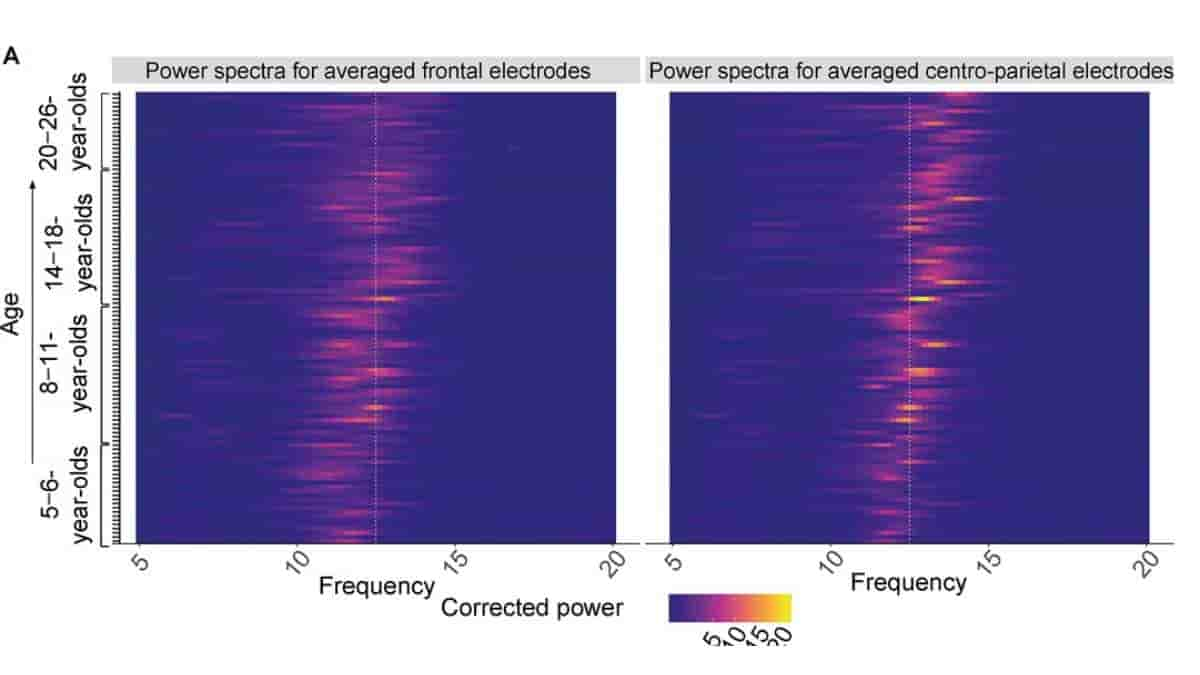Brain cells are interconnected in a manner analogous to an electrical circuit, enabling the transmission of information between different regions of the brain. The human brain continues to transmit signals to process information it has encountered throughout the day, even when it is asleep.
This produces two types of electrical activity patterns that characterize the sleeping brain: slowly repeating waves (or slow oscillations) and rapid bursts of activity known as sleep spindles. Although slow oscillations and sleep spindles are generated in different regions of the brain, they often happen at the same time.
This activity synchronization is thought to aid communication between different areas of the brain. This type of interaction is essential for fresh memories to become stable and long-lasting.
Synchronization of Sleep Spindles
Slow oscillations and sleep spindles show together less frequently in infants, implying that these co-occurring patterns of electrical activity emerge as individuals mature. Ann-Kathrin Joechner and her team set out to discover what causes slow oscillations and sleep spindles to occur concurrently.

Credit: eLife 12:e83565
They employed electroencephalography (or EEG for short) to analyze the brain activity of toddlers, teenagers, and adults while they slept. This demonstrated that slow oscillations and sleep spindles occur simultaneously less frequently in children than in teenagers and adults.
Furthermore, the slow oscillations and sleep spindles identified in toddlers were physically distinct from those observed in adults. Further investigation revealed that the closer the children’s sleep spindles were to adult spindles, the more frequently they emerged at the same time as the slow oscillations.
Future Directions
The results imply that as children grow older, their sleep spindles become more adult-like, leading the spindles to occur more consistently at the same time as slow oscillations. This suggests that brain circuits that create sleep spindles may be critical in the development of successful communication networks in the human brain.
In the future, this work may ultimately provide new insights into how age-related changes to the brain contribute to cognitive development, and suggests sleep as a potential intervention target for neurodevelopmental disorders.
“While SOs [sleep oscillations] provide optimal time windows for sleep spindles to arise, it is the ability to generate adult-like, canonical fast spindles that determines coupling strength and precision across child and adolescent development. Given the evidence for its generating role, our results implicate the maturation of specific thalamocortical circuits as the cornerstone of adult-like SO-spindle coupling patterns,”
the authors conclude.
Abstract
The synchronization of canonical fast sleep spindle activity (12.5–16 Hz, adult-like) precisely during the slow oscillation (0.5–1 Hz) up peak is considered an essential feature of adult non-rapid eye movement sleep. However, there is little knowledge on how this well-known coalescence between slow oscillations and sleep spindles develops. Leveraging individualized detection of single events, we first provide a detailed cross-sectional characterization of age-specific patterns of slow and fast sleep spindles, slow oscillations, and their coupling in children and adolescents aged 5–6, 8–11, and 14–18 years, and an adult sample of 20- to 26-year-olds. Critically, based on this, we then investigated how spindle and slow oscillation maturity substantiate age-related differences in their precise orchestration. While the predominant type of fast spindles was development-specific in that it was still nested in a frequency range below the canonical fast spindle range for the majority of children, the well-known slow oscillation-spindle coupling pattern was evident for sleep spindles in the adult-like canonical fast spindle range in all four age groups—but notably less precise in children. To corroborate these findings, we linked personalized measures of fast spindle maturity, which indicate the similarity between the prevailing development-specific and adult-like canonical fast spindles, and slow oscillation maturity, which reflects the extent to which slow oscillations show frontal dominance, with individual slow oscillation-spindle coupling patterns. Importantly, we found that fast spindle maturity was uniquely associated with enhanced slow oscillation-spindle coupling strength and temporal precision across the four age groups. Taken together, our results suggest that the increasing ability to generate adult-like canonical fast sleep spindles actuates precise slow oscillation-spindle coupling patterns from childhood through adolescence and into young adulthood.
Reference:
- Ann-Kathrin Joechner, Michael A Hahn, Georg Gruber, Kerstin Hoedlmoser, Markus Werkle-Bergner (2023) Sleep spindle maturity promotes slow oscillation-spindle coupling across child and adolescent development. eLife 12:e83565.Top Image: Background-corrected power spectra in averaged frontal (left) and averaged centro-parietal (right) electrodes for every participant at every test time point (y-axis). Credit: eLife 12:e83565
